Cause of death Cancer Role Screenwriter Nationality American Children Maciej Slomczynski | Allegiance United States Poland Books King Kong Name Merian Cooper | |
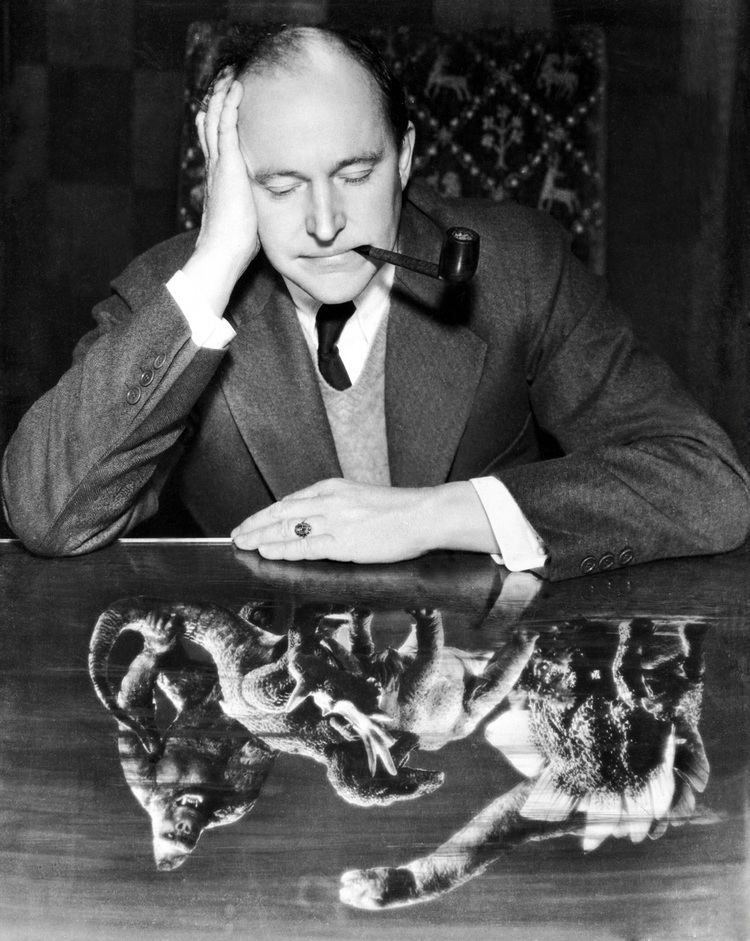 | ||
Full Name Merian Caldwell Cooper Alma mater United States Naval AcademyGeorgia Institute of Technology Occupation DirectorMovie producerMilitary officer Movies King Kong, Mighty Joe Young, Grass, Chang: A Drama of the Wilde, This Is Cinerama Similar People Ernest B Schoedsack, Fay Wray, Robert Armstrong, Bruce Cabot, Edgar Wallace | ||
King kong 3 10 movie clip kong battles the t rexes 2005 hd
Merian Caldwell Cooper (October 24, 1893 – April 21, 1973) was an American aviator, United States Air Force and Polish Air Force officer, adventurer, screenwriter, film director, and producer. Cooper was the founder of the Kościuszko Squadron during the Polish–Soviet War and was a Soviet prisoner of war for a time. He was a notable movie producer, and got his start with film as part of the Explorers Club, traveling the world and documenting adventures. He was a member of the board of directors of Pan American Airways, but his love of film always took priority. During his film career, he worked for companies such as Pioneer Pictures, RKO Pictures, and Metro-Goldwyn-Mayer. He is also credited as co-inventor of the Cinerama film projection process. Cooper's most famous film was the 1933 movie King Kong. He was awarded an honorary Oscar for lifetime achievement in 1952 and received a star on the Hollywood Walk of Fame in 1960.
Contents
- King kong 3 10 movie clip kong battles the t rexes 2005 hd
- King kong 8 10 movie clip climbing the empire state building 2005 hd
- Early life
- Georgia National Guard
- World War I
- Kociuszko Squadron
- Cooper and Schoedsack
- Pan American Airways
- King Kong
- Pioneer Pictures Selznick International Pictures and Metro Goldwyn Mayer
- World War II
- Argosy Pictures and Cinerama
- Awards
- Personal life
- References

King kong 8 10 movie clip climbing the empire state building 2005 hd
Early life
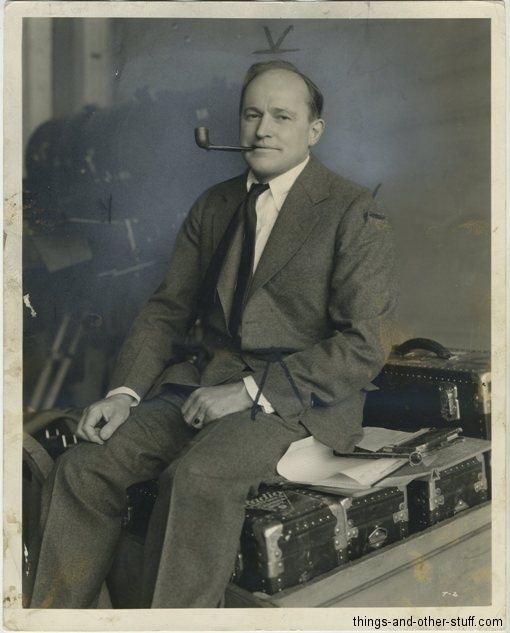
Merian Caldwell Cooper was born in Jacksonville, Florida, to the lawyer John C. Cooper and the former Mary Caldwell. He was the youngest of three children. At age six, Cooper decided that he wanted to be an explorer after hearing stories from the book Explorations and Adventures in Equatorial Africa. He was educated at The Lawrenceville School in New Jersey and graduated in 1911.
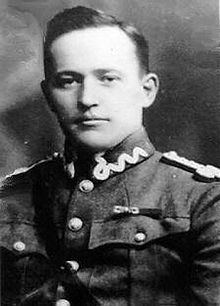
After graduation, Cooper received a prestigious appointment to the U.S. Naval Academy, but was expelled during his senior year for "hell raising and for championing air power". In 1916, Cooper worked for the Minneapolis Daily News as a reporter, where he met Delos Lovelace. In the next few years, he also worked at the Des Moines Register-Leader and the St. Louis Post-Dispatch.
Georgia National Guard
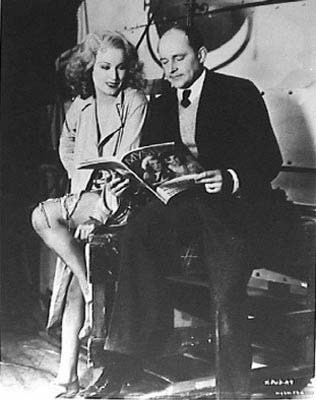
In 1916, Cooper joined the Georgia National Guard to help chase Pancho Villa in Mexico. He was called home in March 1917. He worked for the El Paso Herald on a 30-day leave of absence. After returning to his service, Cooper was appointed lieutenant; however, he turned down the appointment hoping to participate in combat. Instead, he went to the Military Aeronautics School in Atlanta to learn to fly. Cooper graduated from the school as the top in his class.
World War I

In October 1917, Cooper went to France with the 201st Squadron. He attended flying school in Issoudun. While flying with his friend, Cooper hit his head and was knocked out during a 200-foot plunge. After the incident, Cooper suffered from shock and had to relearn how to fly. Cooper requested to go to Clermont-Ferrand to be trained as a bomber pilot. He became a pilot on the 20th Aero Squadron (which later became the 1st Day Bombardment Group).
Cooper served as a DH-4 bomber pilot with the United States Army Air Service during World War I. On September 26, 1918, his plane was shot down. The plane caught fire, and Cooper spun the plane to suck the flames out. Cooper survived, although he suffered burns, injured his hands, and was presumed dead. German soldiers saw his plane's incredible landing and took him to a prisoner reserve hospital.
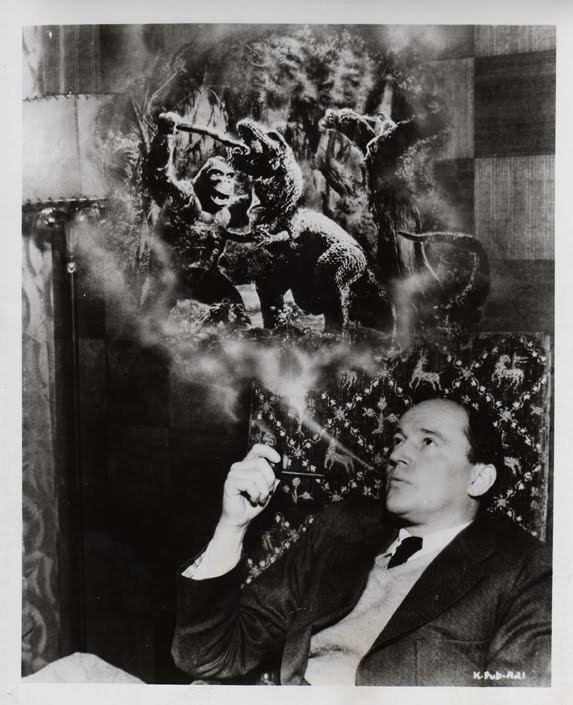
Captain Cooper remained in the Air Service after the war; he helped with Herbert Hoover's American Food Administration that provided aid in Poland. He later became the head of the Poland division.
Kościuszko Squadron
From late 1919 until the 1921 Treaty of Riga, Cooper was a member of a volunteer American flight squadron, the Kościuszko Squadron, which supported the Polish Army in the Polish-Soviet War. On July 13, 1920, his plane was shot down and he spent nearly nine months in a Soviet prisoner of war camp where the writer Isaac Babel interviewed him. He escaped just before the war was over and made it to Latvia. For his valor he was decorated by Polish commander-in-chief Józef Piłsudski with the highest Polish military decoration, the Virtuti Militari.
During his time as a POW, Cooper wrote an autobiography: Things Men Die For. The manuscript was published by G. P. Putnam's Sons in New York (the Knickerbocker Press) in 1927. However, in 1928 Cooper regretted releasing certain details about "Nina" (probably Małgorzata Słomczyńska) with whom he had had relations outside of wedlock. Cooper then asked Dagmar Matson, who had the manuscript, to buy all the copies of the book possible. Matson found almost all 5,000 copies that had been printed. The books were destroyed, while Cooper and Matson each kept a copy.
An interbellum Polish film directed by Leonard Buczkowski, Gwiaździsta eskadra (The Starry Squadron), was inspired by Cooper's experiences as a Polish Air Force officer. The film was made with the cooperation of the Polish army and was the most expensive Polish film prior to World War II. After World War II, all copies of the film found in Poland were destroyed by the Soviets.
Cooper and Schoedsack
After returning from overseas in 1921, Cooper got a job working the night shift at The New York Times. He was commissioned to write articles for Asia magazine. Cooper was able to travel with Ernest Schoedsack on a sea voyage on the Wisdom II. As part of the journey, he traveled to Abyssinia, or the Ethiopian Empire, where he met their prince regent, Ras Tefari, later known as Emperor Haile Selassie I. The ship left Abyssinia in February 1923. On their way home, the crew narrowly missed being attacked by pirates, and the ship was burned down. His three-part series for Asia was published in 1923.
After returning home, Cooper researched for the American Geographical Society. In 1924, Cooper joined Schoedsack and Marguerite Harrison who had embarked on an expedition that would be turned into the film Grass (1925). They returned later the same year. Cooper became a member of the Explorers Club of New York in January 1925 and was asked to give lectures and attend events due to his extensive traveling. Grass was acquired by Paramount Pictures. This first film of Cooper and Schoedsack gained the attention of Jesse Lasky, who commissioned the duo for their second film, Chang (1927). They also produced the film The Four Feathers, which was filmed among the fighting tribes of the Sudan. These films combined real footage with staged sequences.
Pan American Airways
Between 1926 and 1927, Cooper discussed the plans for Pan American Airways with John Hambleton, which was formed during 1927. Cooper was a member of the board of directors of Pan American Airways. During his tenure at Pan Am, the company established the first regularly scheduled transatlantic service. While he was on the board, Cooper did not devote his full attention to the organization; he took time in 1929 and 1930 to work on the script for King Kong. By 1931, he was back in Hollywood. He resigned from the board of directors in 1935, following health complications.
King Kong
Cooper had said that he thought of King Kong after he had a dream that a giant gorilla was terrorizing New York City. When he woke, he recorded the idea and used it for the film. He was going to have a giant gorilla fight a Komodo dragon or other animal, but found that the technique of interlacing that he wanted to use would not provide realistic results.
Cooper needed a production studio for the film, but recognized the great cost of the movie, especially during the Great Depression. Cooper helped David Selznick get a job at RKO Pictures, which was struggling financially. Selznick became the vice president of RKO and asked Cooper to join him in September 1931, although he had only produced 3 films thus far in his career. Cooper began working as an executive assistant at age thirty-eight. He officially pitched the idea for King Kong in December 1931. Shortly after, he began to scope out actors and build full-scale sets, although the screenplay was not yet complete.
The screenplay was delivered to Cooper in January 1932. Schoedsack contributed to the film, focusing on shooting scenes for the boat sequences and in native villages, leaving Cooper to shoot the jungle scenes. In February 1933, the title for the film was registered for copyright. Throughout filming there were creative battles. Critics at RKO argued that the film should begin with Kong. Cooper believed that a film should begin with a "slow dramatic buildup that would establish everything from characters to mood ..." so that the action of the film could "naturally, relentlessly, roll on out of its own creative movement," and thus chose to not begin the film with a shot of Kong. The iconic scene in which Kong is on top of the Empire State Building was almost called off by Cooper for legal reasons, but was kept in the film because RKO bought the rights to The Lost World.
Overlapping with the production of King Kong was the making of The Most Dangerous Game, which began in May 1932. Cooper once again worked with Schoedsack to produce the film.
In the 1933 version of King Kong, Cooper and co-director Ernest B. Schoedsack appear at the end, piloting the plane that finally finishes off Kong. Cooper had reportedly said, "We should kill the sonofabitch ourselves." Cooper personally cut a scene in King Kong in which four sailors are shaken off a rope bridge by Kong, fall into a ravine, and are eaten alive by giant spiders. According to Hollywood folklore, the decision was made after previews in January 1933, during which audience members either fled the theater in terror or talked about the ghastly scene throughout the remainder of the movie. However, more objective sources maintain that the scene merely slowed the film's pace. Legend has it that Cooper kept a print of the cut footage as a memento, although it has never been found. In 1963, Cooper argued unsuccessfully that he should own the rights to King Kong; later in 1976, judges ruled that Cooper owned the rights to King Kong outside the movie and its sequel. Selznick left RKO before the release of King Kong, and Cooper served as production head from 1933 to 1934 with Pan Berman as his executive assistant.
In the 2005 remake of King Kong, upon learning that Fay Wray was not available because she was making a film at RKO, Carl Denham (Jack Black) replies, "Cooper, huh? I might have known."
Pioneer Pictures, Selznick International Pictures, and Metro-Goldwyn-Mayer
Cooper helped the Whitney cousins form Pioneer Pictures in 1933, while he was still working for RKO. He was named vice president in charge of production for Pioneer Pictures in 1934. He would use Pioneer Pictures to test his technicolor innovations. The company contracted with RKO in order to fulfill Cooper's obligations to the company, including She and The Last Days of Pompeii. Cooper later referred to She as the "worst picture I ever made."
After these disappointments, Pioneer Pictures released a short film in three-strip technicolor called La Cucaracha which was well received. The film won an Academy Award in 1934. Pioneer released the first full-length technicolor film, Becky Sharp in 1935. Cooper helped to advocate and pave the way for the ground-breaking technology of technicolor, as well as the widescreen process called Cinerama.
Selznick formed Selznick International Pictures in 1935, and Pioneer Pictures merged with it in June 1936. Cooper became the vice president of Selznick International Pictures that same year. Cooper did not stay long; he resigned in 1937 due to disagreements over the film Stagecoach.
After resigning from Selznick International, Cooper went to Metro-Goldwyn-Mayer (MGM) in June 1937. Cooper's most successful film at MGM was War Eagles. The film was postponed during World War II, and Cooper returned to the Air Force. The film was abandoned, however, and never finished.
World War II
Cooper re-enlisted and was commissioned a colonel in the U.S. Army Air Forces. He served with Col. Robert L. Scott in India. He worked as logistics liaison for the Doolittle Raid. Thereafter, Cooper and Scott worked with Col. Caleb V. Haynes at Dinjan Airfield. They all were involved in setting up the Assam-Burma-China Ferrying Command. This marked the beginnings of The Hump Airlift.
Colonel Cooper later served in China as chief of staff for General Claire Chennault of the China Air Task Force, which was the precursor of the Fourteenth Air Force. On 25 October 1942 a CATF raid consisting of 12 B-25s and 7 P-40s, led by Colonel Cooper, successfully bombed the Kowloon Docks at Hong Kong.
He served then from 1943 to 1945 in the Southwest Pacific as chief of staff for the Fifth Air Force's Bomber Command. At the end of the war, he was promoted to brigadier general. For his contributions, he was also aboard the USS Missouri to witness Japan's surrender.
Argosy Pictures and Cinerama
Cooper and his friend and frequent collaborator, noted director John Ford, formed Argosy Productions in 1946 and produced such notable films such as Wagon Master (1950), Ford's Fort Apache (1948), and She Wore a Yellow Ribbon. Cooper's films at Argosy reflected his patriotism and his vision of America.
Argosy negotiated a contract with RKO in 1946 to make four pictures. Cooper was able to make Grass a complete picture. Argosy also produced Mighty Joe Young, which brought in Schoedsack as director. Cooper visited the set of the film every day to check on progress.
Cooper left Argosy Pictures to pursue the process of Cinerama. He became the vice president of Cinerama Productions in the 1950s. He was also elected a board member. After failing to convince other board members to finance skilled technicians, Cooper left Cinerama with Cornelius Vanderbilt Whitney to form C.V. Whitney Productions. Cooper continued to outline movies to be shot in Cinerama. C.V. Whitney Productions only produced a few films. Cooper was the executive producer for The Searchers (1956), again directed by Ford.
Awards
For his military service in Poland, Cooper was awarded the Silver Cross of the Order of Virtuti Militari (presented by Piłsudski), and Poland's Cross of Valour.
In 1927 Cooper was one of 19 prominent Americans who were given the title of "Honorary Scouts" by the Boy Scouts of America for "... achievements in outdoor activity, exploration and worthwhile adventure ... of such an exceptional character as to capture the imagination of boys". The other honorees were Roy Chapman Andrews, Robert Bartlett, Frederick Russell Burnham, Richard E. Byrd, George Kruck Cherrie, James L. Clark, Lincoln Ellsworth, Louis Agassiz Fuertes, George Bird Grinnell, Charles Lindbergh, Donald Baxter MacMillan, Clifford H. Pope, George Palmer Putnam, Kermit Roosevelt, Carl Rungius, Stewart Edward White, and Orville Wright.
In 1949 Mighty Joe Young won an Academy Award for Best Visual Effects, which was presented to Willis O'Brien, the man responsible for the film's special effects.
Cooper was awarded an honorary Oscar for lifetime achievement in 1952. His film The Quiet Man was nominated for Best Picture that year, but lost to Cecil B. DeMille's The Greatest Show on Earth. Cooper has a star on the Hollywood Walk of Fame, though his first name is misspelled "Meriam".
Personal life
Cooper was the father of Polish translator and writer Maciej Słomczyński. He married film actress Dorothy Jordan on May 27, 1933. They kept their marriage a secret from Hollywood for a month before it was reported by journalists. He suffered a heart attack later that year. In the 1950s he supported Joseph McCarthy in his crusade to root out Communists in Hollywood and Washington, D.C.
Cooper founded Advanced Projects in his later life and served as the chairman of the board. He wanted to explore new technologies like 3-D color television productions. Cooper died of cancer on April 21, 1973, in San Diego. His ashes were scattered at sea with full military honors.
